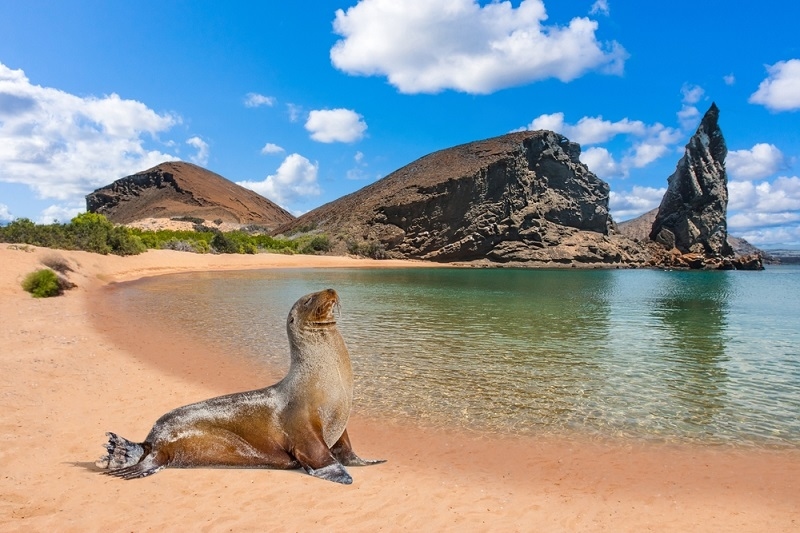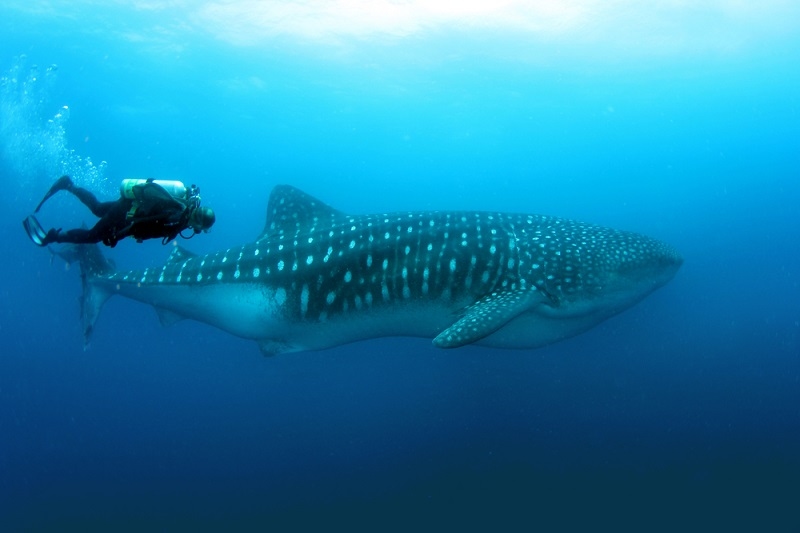
If there’s one place on earth where the underwater world feels like it belongs to another planet, it’s the Galapagos Islands. Think hammerhead sharks gliding in formation, curious sea lions darting around like underwater puppies, and giant schools of fish so thick they block the sunlight. This isn’t your average tropical dive trip—it’s a once-in-a-lifetime adventure.
For anyone even remotely interested in exploring the deep, galapagos islands diving should sit right at the top of the bucket list. The islands are world-renowned, not just for Charles Darwin’s land-based discoveries, but also for the sheer magic that happens beneath the waves.
So, what exactly makes scuba diving here so mind-blowing? Let’s dive in—pun fully intended.
The Galapagos sits where several ocean currents collide—the warm Panama Current, the cold Humboldt, and the nutrient-rich Cromwell. These currents bring in a constant flow of food, turning the waters into a buffet that attracts some of the ocean’s most iconic species.
This means that galapagos diving is never just about spotting colorful reef fish. You’ll share the water with whale sharks, manta rays, penguins (yes, penguins in the tropics!), and even the occasional orca. It’s unpredictable, raw, and wild—exactly how nature should be.
Of course, conditions here can be tough. Strong currents, cooler water temperatures, and limited visibility in some spots mean this isn’t always the easiest place to dive. But for those ready to take it on? Pure magic.

This is the crown jewel. Sadly, the arch itself collapsed in 2021, but the site remains one of the best places on earth to swim with hammerhead sharks. Imagine hundreds—literally hundreds—circling in schools above you. Add in whale sharks during the season (June to November), and you’ve got a bucket-list site like no other.
Close to Darwin, Wolf Island is another hotspot for big pelagic action. Think eagle rays, silky sharks, Galapagos sharks, and dolphins. Night dives here are legendary too—you might spot hunting moray eels or curious lobsters crawling across the rocky bottom.
Nicknamed “the washing machine” thanks to its swirling currents, Gordon Rocks is a challenge even for experienced divers. But those who brave it are rewarded with hammerheads, schools of barracuda, and playful sea lions that swoop in to check out your bubbles.
A bit gentler, Cousin’s Rock is ideal for those who want a mix of macro life and big encounters. Seahorses, frogfish, and nudibranchs hide in the corals, while manta rays glide above. It’s a photographer’s paradise.
This site often doubles as a checkout dive, but don’t underestimate it. White-tipped reef sharks, eagle rays, and garden eels are everywhere. And with luck, you might spot a blue-footed booby diving in after a fish, crashing into the water right beside you.
With so many sites, it’s easy to see why galapagos islands scuba diving has a reputation that borders on mythical. Every dive feels like stepping into a nature documentary.
Let’s be honest: most divers come here for the sharks. And rightly so. Scalloped hammerheads gather in massive schools, creating one of the most iconic sights in diving. Galapagos sharks, silkies, and even the elusive tiger shark also make appearances.
But the islands aren’t just about predators. Penguins zoom around like tiny torpedoes, sea lions nip at your fins, and marine iguanas munch algae on the rocks before paddling past you like little prehistoric dragons.
And if that wasn’t enough, manta rays sweep through like alien spacecraft, while whale sharks—some the size of a bus—show up when you least expect them. Seriously, scuba diving Galapagos feels like diving into a living encyclopedia of marine life.
Recommended Article: Blue Hole Scuba Diving 2025: Top Sites, Gear & Pro Tips
Technically, diving is possible year-round, but conditions change dramatically with the seasons.
Warm season (December–May): Water temperatures hover around 70–80°F. Visibility is often better, and you’ll see more reef fish, rays, and sea lions.
Cool season (June–November): This is when things get wild. Cooler water (60–70°F) brings stronger currents and the famous whale sharks. Hammerhead sightings peak too.
So, what’s better? That depends on what you want. If you want calmer dives with vibrant reefs, go warm season. If you want adrenaline and big pelagic action, the cool season is your ticket.
Here’s the deal: the best sites, like Darwin and Wolf, are only accessible by liveaboard. These floating dive hotels give you multiple days in remote spots, meaning more chances to see the big stuff.
Day diving, on the other hand, is still fantastic. Sites near Santa Cruz and San Cristóbal deliver plenty of action and are more beginner-friendly. Plus, you can combine it with land-based adventures—giant tortoises, volcanic hikes, you name it.
But if you’re serious about experiencing the ultimate, go liveaboard. It’s the only way to get the full galapagos islands diving experience.
Let’s not sugarcoat it: the Galapagos isn’t beginner-friendly. Currents can be brutal, thermoclines drop the temperature fast, and dives can get deep quickly. That said, intermediate and advanced divers thrive here.
If you’re planning your trip:
Log some dives in current-heavy destinations beforehand.
Bring a good wetsuit (5–7mm, maybe even a hood).
Be ready to follow your guide closely—this is not the place to drift off alone.
And don’t forget seasickness pills if you’re heading out on a liveaboard. Those Pacific swells don’t play around.
What makes the Galapagos special is that the magic doesn’t stop when you climb back onto the boat. Between dives, you might spot dolphins racing the bow, albatrosses soaring above, or iguanas sprawled on the volcanic rocks. On land, giant tortoises lumber through the highlands, and blue-footed boobies perform their comical mating dance.
The whole experience feels surreal. Diving here isn’t just about ticking off species. It’s about being immersed in a world that still feels untouched.
Let’s be real—trips here aren’t cheap. Liveaboards can set you back several thousand dollars, flights add up, and permits aren’t exactly pocket change. But ask anyone who’s been, and the answer is unanimous: absolutely worth it.
After all, where else can you glide past a whale shark in the morning, play with sea lions in the afternoon, and then watch a penguin zip by your mask before dinner? That’s the magic of galapagos diving.
Thought You’d Find This Useful: Discover the Best Scuba Diving in Africa: Top Spots & Tips
There are dive destinations. And then there’s the Galapagos. Rugged, wild, challenging, and unforgettable. It demands respect, preparation, and maybe even a bit of bravery. But for those who answer the call, it delivers memories that will stay with you for life.
If the ocean is your happy place, then galapagos islands scuba diving is the ultimate pilgrimage. So, what are you waiting for? Time to start planning. Who knows—your next dive might just be alongside a school of hammerheads, deep in the heart of the Pacific.
This content was created by AI